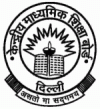1. Point defect Decreases the density of a crystal? (1)
2. What is the primary structural feature necessary for a molecule to make it useful in a condeusation pdymesisation reaction? (1)
3. What is the number of atoms in a unit cell of FCC crystal? (1)
4. Arrange the following compaunds in an increasing order of basic strength in their aqueaus solutions (1)
NH3 , CH3NH2 , (CH3)2 NH , (CH3)3 N
5. Write the IUPAC name of (CH3)2 CH-CH2,-C-CH(CH3)2 (1)
6. Why is electrolytic reduction preferred over chemical reduction for the isolation of certain metals? (1)
7. What is the role of depressant in froth floatation process? (1)
8. What is the percentage efficiency of packing in case of a metal crystal for body centred cubic structure? (1)
9. A copper-silver cell is set up. The copper ion concentration in it is 0.10 M the silverion canc. is not known. the cell potential mearured 0.422 V. Determine the conc. of silver ion in the cell,
Given E0Ag+=0.80v, E0cu2+/cu=+0.34v (2)
10. Describe the role of the following :- (2)
(i.) NaCN in the extraction of silver from a silver ore
(ii.) Cryolite in the extraction of aluninium from pure alumina
11. Differentiate between condensation and addition polymerisation. Give one example each of the resulting polymers. (2)
12. Explain the mechanism of aid dehyhration of ethanol to yield ethene. (2)
13. Draw the structures of (i) Xef2 (ii)H3Po4 (2)
(i) Rusting of iron in saline water
(ii) Iron does not rust even if zinc coating is broken
14. Describe the following with on example of each. (2)
(i) Reimer-Themann Reaction
(ii) Sandmeyer Reaction
OR
Describe the follwing reactions with one example of each
(i) Friedal- Craft reaction
(ii) Cannizzaro Reaction
15. Complete the following chemical reaction equations (2)
(i) Xef2+H2O
(ii) PCl5+H2O
16. Complete the following chemical reaction equation:- (2)
(i) MNO4+ C2O42-+ H+
(ii) Cr2O72-+ Fe2++ H+
17. Enumerate the reactions and facts of D-glucose which cannot be explained by its open chain structure. (2)
18. A first order reaction has a rate constant of 0.0051 min-1 If we begin with O.10M Canc. of reactant, What conc. of the reactant will be left after 3 hours. (2)
19. Calculate the cell emf and Drgo for the following at 25oc Zn(s)/Zn2+(0.1M) 11 Cd2+ (0.01M)/ Cd(s) Given EoZn2+/Cd=-0.763 Volt, 1F=96500 C mol-1, R=8.314 JK-1 Mol-1
OR
Calculate the standard electrode potential of Ni2+/Ni electrode if emf of the cell Ni(s)/Ni2+/Ni2+(0.01 m)II Cu2+ (0.1M)I Cu(s) is 0.59volt Given Eo Cu2+/Cu = +0.34 Volt
20. Explain the following
(i) Electrophoresis (ii) Dialysis (iii) Tyndall effect
21. (i) What is spectro chemical series 1x3=3
(ii) Show the splitting of degenerate d-crbitals occarding to crystal field theory.

CBSE Circular | Children with Special Needs (CWSN) - Integration
CENTRAL BOARD OF SECONDARY EDUCATIOCENTRAL EDUCATION
“Shiksha Kendra”, 2, Community Center,
Preet Vihar, Delhi-110092
CM/CBSE/ACAD/HEALTH/2009 December 24, 2009
Circular No. 65
All the Heads of Independent Schools
Affiliated to the CBSE
Subject : Children with Special Needs (CWSN) – Integration.
Annexture
Guidelines of Inclusive Education of Children with Disabilities (IECD) each
school is advised :

UP Board | Physical Education TGT Result 2009
UTTAR PRADESH Madhyamik Siksha Selection Board , ALLAHABAD : Physical Education T.G.T Result 2009
Madhyamik Shiksha Parishad Uttar Pradesh has annouced Physical Education TGT Result 2009
Courtesy:- Amar Ujala
CBSE Guess Paper Physics Class XII for Examination-2010
Q1. What is quantization of charge. What is its cause? Can a body have a
charge of 18*10-20 C?
Q2. How are n-P-n and P-n-P transistors represented symbolically in a
circuit?
Q3. Write any one equation representing nuclear fusion reaction?
Q4. In a hydrogen atom, an electron revolves around a proton. Which of these
two exerts a greater electrostatic force on the other?
Q5. Define gyromagnetic ratio. What is it’s value?
Q6. What is the order of voltages that can be built up using a Van De Graff
generator?
Q7. Describe how a metallic rod can be made positively charged by the method
of induction.
Q8. The instantaneous current flowing from an a.c. source is I=5 sin 314t.
What is the rms. value of current?
Q9. A velocity selector is to be designed for particles of velocity 10m/s.
What magnetic field should be employed if the electric field in it is 100 N/C.
Q10. The resistivity of a metal X is 3.2 x 10-8 while the free
electron density is 5 x 1028 m-3. Find the drift velocity
of electrons if a potential gradient of 1 Vm-1 is applied across X.
Q11. What type of materials are used for making
(a) Permanent magnets
(b) Transformer cores.
Give two line reasons for each
Q12. Free electrons in a conductor are not at rest. How can you explain the
absence of electric current without potential difference across its ends?
Q13. Define the term resistivity and write its S.I. unit. Derive the
expression for the resistivity of a conductor in terms of number density of free
electrons and relaxation time.
Q14. State Gauss theorem and using it derive the value of electric field at a
point R mts away from an infinite line of charge having charge density λ C/m.
Q15. An alpha particle and a proton accelerated by the same potential
difference enter into a magnetic field. Find the ratio of their radius and the
ratio of their frequency.
Q16. A long cylinder of radius Ro is carrying a current Io
,which is uniformly distributed over its cross section. Derive an expression for
the magnitude of magnetic field inside as well as outside the wire. Plot a curve
to show the variation of magnetic field with radial distance.
Q17. Explain the following terms
(a) Electrostatic shielding (b) Faraday cages (c) Dielectric
constant
Guess Papers: CBSE Class XII Business Studies for 2010 Examination
Guess Papers: CBSE Class XII Informatics Practice for 2010 Examination
Pages
